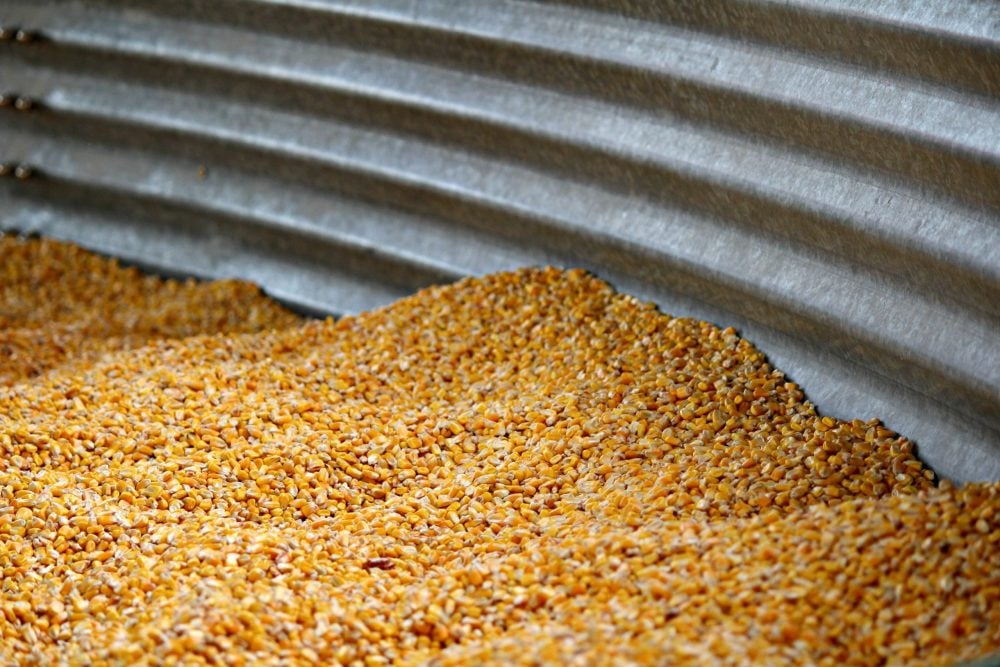There has been on and off again progress on the Ontario corn crop over the past couple of weeks.
As of Dec. 1, we estimate that Ontario farmers had harvested 95 per cent of the soybeans and 60 per cent of the corn crop.
The U.S. harvest is in the final stages. South of the border, farmers had harvested 96 per cent of soybeans and 89 per cent of the corn as of Dec. 1.
Quick view
Soybeans: China has purchased no Canadian soybeans this crop year.
Read Also

Cycle swings dictate farming profitability
It can be profitable to understand where the crop markets are positioned in the context of their big-picture cycles.
Wheat: Global wheat market futures are strengthening.
The corn and soybean futures were under pressure during the harvest period; however, the Ontario corn basis has improved, partially offsetting the decline in the futures market.
Ontario soybean prices have moved in tandem with the 45-cent-per-bushel drop in the soybean futures market.
Winter wheat basis levels have strengthened significantly resulting in stronger Ontario cash prices. The Northern U.S. states and Ontario are an island in the world wheat market due to the historically tight fundamentals for soft red winter wheat.
U.S. and China trade negotiators would like to sign a deal before the end of the year. U.S. President Donald Trump is expected to hold off on the Dec. 15 tariffs to encourage negotiations. The sticking points included enforcement of the deal and how much will Trump roll back tariffs upon signing Phase One.
Certain media outlets also suggested the issue of intellectual property needs to be finalized.
The U.S. government passed legislation supporting Hong Kong protestors but this doesn’t appear to be influencing negotiations.
In retaliation, China said that U.S. military ships and aircraft won’t be allowed to visit Hong Kong and also announced sanctions against several U.S. non-government organizations.
The March Canadian dollar dipped to one-month lows over the past week, which has supported cash crop prices in Ontario. Canadian gross domestic product slowed to 1.3 per cent during the third quarter on a year-over-year basis, down from the revised 3.5 per cent annual growth in the second quarter.
Softer crude oil prices and a wider current account deficit has set a negative tone for the Canadian dollar.
The market is also factoring negative fiscal policy. No changes are expected by the federal Liberal government in regards to the tax structure or deficit spending.
Soybeans
The soybean market is in a precarious situation. In the previous issue, we were slightly bullish to the soybean market, but the futures market is down about 45 cents per bushel and Ontario cash prices have experienced a similar drop.
We also mentioned the focus was turning to South American crop conditions and export demand over the winter period. U.S. soybean export commitments are up about five percent from last year.
While China has been a larger buyer of U.S. soybeans, sales to non-Chinese destinations are down from year-ago levels offsetting the gain from China. Put simply, world demand for soybeans hasn’t improved; we’ve just seen a change in trade flows.
Secondly, we overestimated export demand for Ontario soybeans. We don’t have official weekly data but Canadian crop year-to-date exports to Oct. 31 were 623,100 tonnes, down from 1.099 million tonnes last year for the same timeframe. The lack of Chinese demand and strong competition from South America has hindered offshore movement for Canadian soybeans.
We’ve seen year-over-year increases to Europe and Iran but this doesn’t compare to the Chinese buying that was evident in the fall of 2018. The data showed that China bought no Canadian soybeans so far this crop year.
Brazilian soybean seeding is in the final stages and Argentinian farmers have planted about 35 per cent of the soybean crop. At this stage, there are no weather concerns and South American crop estimates are unchanged from earlier in November. While the U.S. soybean harvest has wrapped up, analysts have quite a range on yield estimates. The USDA will be out with its final production numbers in January.
What to do: We’ve advised producers to be 50 per cent sold on their 2019 production. At this stage, South American crop conditions are favourable and there is no weather premium in the market.
At the same time, we view the U.S. and Canadian soybean fundamentals somewhat bullish given the year-over-year decline in ending stocks.
We feel inclined to be patient on sales for the time being. We don’t want to make a selling decision before the South American crop is more certain and the USDA releases its final yield survey.
Corn
Ontario corn prices are relatively unchanged from two weeks-ago. Export demand remains sluggish but local supplies are rather snug due to the delayed harvest. Basis levels in Ontario and the northern U.S. states are functioning to attract supplies from U.S. regions where the harvest is further advanced.
U.S. sales commitments to Canada for the week ending Nov. 21 were 344,100 tonnes. The bulk of these sales are to Ontario. We mentioned in previous issue that basis levels in the northern U.S. states are US 50 cents to 80 cents per-bushel higher than last year at this time. The USDA estimated that 11 per cent of the corn crop was still out in fields with most of these acres in northern states.
Total U.S. corn sales commitments are down 45 per cent from last year however, U.S. export offers are competitive on the world market and there has been a slight improvement in export business.
The South American crop is in the early growing stages and the main Brazilian second corn crop will only be seeded later in winter.
The corn market usually incorporates a risk premium when the Argentine and Brazilian (first crop) corn moves through pollination. We’re also anticipating a minor decrease in 2019 U.S. corn production when the USDA releases the final yield estimates in January.
Next spring, U.S. corn acres are expected to be up four to six per cent. Fundamentally, the corn market will be extremely bearish next summer barring adverse weather.
The factors mentioned above will determine our sales strategy for the remainder of the crop year.
What to do: We’ve advised producers to be 50 per cent sold on their 2019 production. We’re planning to make our next recommendation in January after the USDA releases its final production number. There is also potential for the world market to incorporate a weather premium due to the uncertainty in Argentine or Brazilian production.
Wheat
Ontario soft red winter and hard red winter wheat markets are functioning to ration demand and encourage production.
We’ve mentioned in previous issues that the soft red winter wheat fundamentals will be historically tight in Canada and the U.S. Ontario domestic values are high enough to curb exports.
At the same time, the higher prices are encouraging flour millers to use alternative wheats, such as hard red spring if possible.
Three factors are influencing the world wheat complex, which is causing the futures markets to strengthen.
First, we’ve seen downward revisions to the Australian wheat crop. Analysts now forecast the crop to finish around 15.5 million tonnes, which is down from estimates that ranged from 18 to 19 million tonnes earlier in fall.
Secondly, analysts estimate that only 80 per cent of the French winter wheat crop was seeded due to excessive rains in October and the first half of November.
Finally, the U.S. hard red winter wheat fundamentals appear to be tightening. We’re seeing stronger domestic use for flour and feed purposes.
Basis levels for hard red winter have also been strengthening due to improving export demand. U.S. wheat exports are up nine per cent from last year.
We can now make the case that the U.S. hard red winter wheat carryout for 2019-20 will drop below the five-year average. The U.S. has always been the residual carrier of world wheat supplies but this will change in the 2019-20 crop year.
What to do: We’ve advised producers to be 70 per cent sold on their 2019 milling wheat sales.
The wheat market appears to have further upside potential given the changing fundamentals. We’ll be patient to make additional recommendations.













